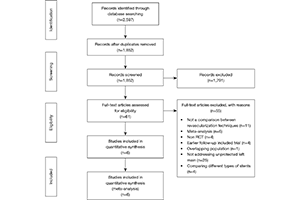Percutaneous coronary intervention versus coronary bypass surgery for unprotected left main disease: a meta-analysis of randomized controlled trials
Abstract
Background: This meta-analysis of randomized controlled trials (RCTs) was aimed at comparing coronary artery bypass grafting (CABG) with percutaneous coronary intervention (PCI) for the treatment of unprotected left main coronary disease.
Methods: All RCTs randomizing patients to any type of PCI with stents vs. CABG for left main disease (LMD) were included. Primary outcome was a composite of follow-up death/myocardial infarction/stroke/repeat revascularization. Secondary outcomes were peri-procedural mortality and the individual components of the primary outcome. Incidence rate ratio (IRR) or odds ratio (OR) and 95% confidence intervals (CIs) were pooled using a generic inverse variance method with random effects model. Subgroup analyses were done based on: (I) type of PCI [bare metal stents (BMS) vs. drug-eluting stents (DES)] and; (II) mean SYNTAX score tertiles. Leave one-out analysis and meta-regression were performed.<
Results: Six trials were included (4,700 patients; 2,349 PCI and 2,351 CABG). Follow-up ranged from 2.33 to 5 years. PCI was associated with higher risk of follow-up death/myocardial infarction/stroke/repeat revascularization (IRR =1.328, 95% CI, 1.114–1.582, P=0.002) and of repeated revascularization (IRR =1.754, 95% CI, 1.470–2.093, P<0.001). The risk of peri-procedural mortality (OR =0.866, 95% CI, 0.460–1.628, P=0.654), follow-up mortality (IRR =0.947, 95% CI, 0.711–1.262, P=0.712), myocardial infarction (IRR =1.342, 95% CI, 0.827–2.179, P=0.234) and stroke (IRR =0.800, 95% CI, 0.374–1.710, P=0.565) were similar between groups. No differences were found between DES and BMS subgroups. The risk of follow-up death/myocardial infarction/stroke/repeat revascularization with PCI was higher in all SYNTAX tertiles, with a progressive increase from the 1st to the 3rd tertile. At meta-regression, higher mean SYNTAX score was associated with higher risk for the primary outcome in the PCI group (beta =0.02, P=0.05), whereas no association was found with female gender, mean age, or diabetes.
Conclusions: CABG remains the therapy of choice for the treatment of unprotected LMD, especially for patients with a high SYNTAX score.
Cover






